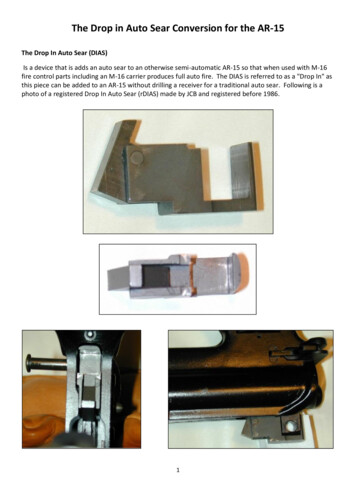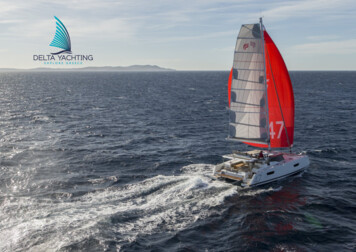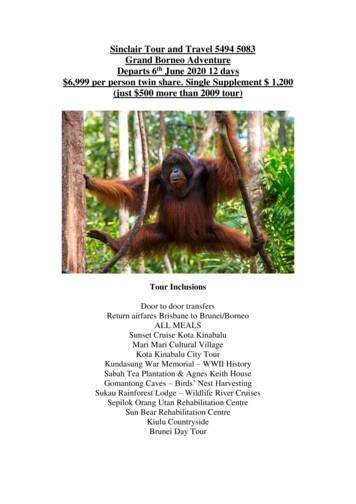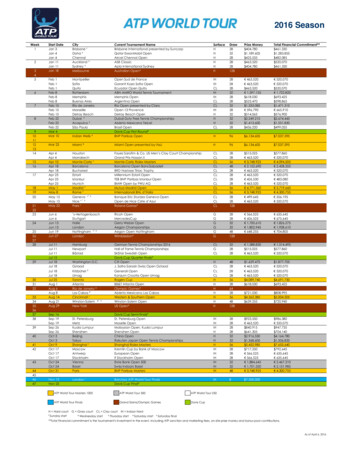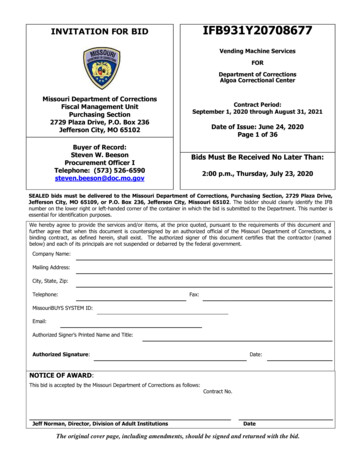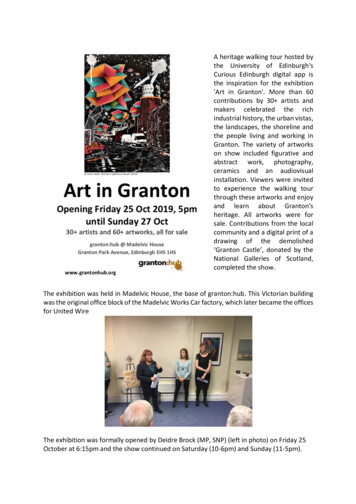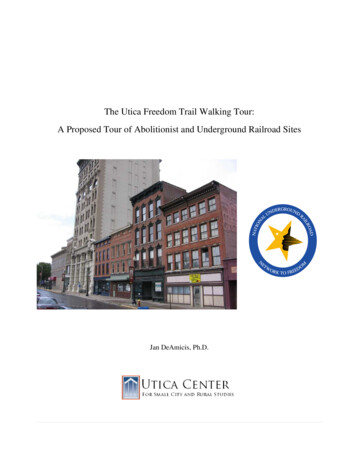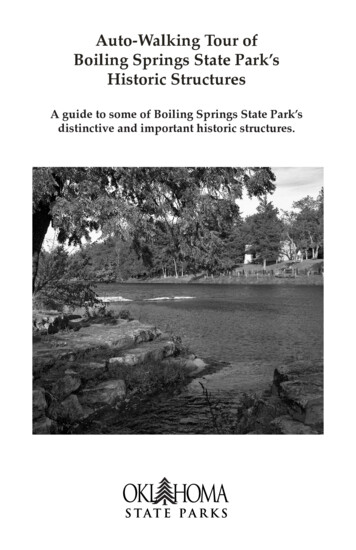
Transcription
Auto-Walking Tour ofBoiling Springs State Park’sHistoric StructuresA guide to some of Boiling Springs State Park’sdistinctive and important historic structures.
IntroductionPresident Franklin Roosevelt’s “New Deal” program in1933 gave meaningful work to millions of unemployedAmericans. Through the New Deal, roads, bridges anddams were built; forests and shelter-belts were planted; andcity, state and national park facilities were constructed. TheNew Deal provided the impetus for the development ofOklahoma’s first state parks. Boiling Springs State Park hasthe distinction of being one of those parks that were builtduring the New Deal era of the 1930’s.One of the most important programs within Roosevelt’sNew Deal was the Civilian Conservation Corps. Thechief purposes of the CCC were to conserve the nation’snatural resources and to provide jobs and job training forunemployed youth. Through the combined talents andhard work of National Park Service architects, CivilianConservation Corps enrollees, and U.S. Army campsupervisors, new parks were built throughout America. EachCCC camp consisted ofabout 200 unmarriedmen, who werebetween the ages of 18and 25. Each enrolledreceived a monthlywage of 30, of which 25 was sent home tohelp their family.Long before western Oklahoma was settled by hardypioneers, Boiling Springs was well-known by Plains Indianswho came here to camp and rest. After the Land Run of 1893this area was part of a pioneer homestead.
In 1925 William Shaulpurchased this farm withthe idea of making it arecreation area; by 1930he built Shaul’s Lake.With the New Deal of1933, William Shauland the citizens ofWoodward seized on thehistoric opportunity to turn Shaul’s Lake into a state park.In 1935, Woodward approved a bond issue that allowedthe community to purchase 520 acres of land and the lakefrom Mr. Shaul. This, combined with some additional landthat was later purchased by the State of Oklahoma, becameBoiling Springs State Park.Boiling Springs, as well as other park facilities of this region,were designed by Herbert Maier and his team of architects,engineers and landscape designers. Based on his designwork in the 1920’s at Yellowstone, Grand Canyon andYosemite National Parks,Maier was highly acclaimedfor his “rustic” parkstructures. Maier’s buildingswere made of native stoneand large timbers. Theywere designed so as to blendinto the landscape.L. to R. Dr. Bumpus, Kenneth Charleyand Herbert Maier at Norris MuseumConstruction within Yellowstone National Park, 1929. Courtesy National Parks Service.Description of the Auto and Walking TourThis tour highlights some of Boiling Springs’ historic CCCstructures.Those facilities that are easily viewed from a car or that havea hard-surfaced walkway are listed in this pamphlet as (EasyView).
Before walking up to cabins, picnic pavilions and group campfacilities, please check with the park office to determine ifthese facilities are already being used by other park guests. Ifthey are rented, please do not walk near to the buildings.For Your SafetyPlease be careful as you stop your vehicle and walk to eachviewing station. Park your vehicle off of the roadway. Alwaysbe alert to traffic and never let children walk unattended.Always keep children at your side.Station No. 1Pool BathhouseThe hub of the park onhot summer days, thisbathhouse is an excellentexample of the NationalPark Service’s “rustic”architecture. Throughcareful design and the useof native stone and roughhewn timbers, this building blends into the site. The whitishgray stone used by the CCC throughout this park is dolomite.This rock was quarried southeast of Woodward.There wasn’t a swimming poolwhen this bathhouse first opened.The CCC built a large swimmingarea from a portion of Shaul Lake.(Easy View)Station No. 2 Children’s Wading Pool AreaBelow Shaul Lake the CCC’sbuilt a stone-lined wadingpool for children. Althoughthe rocky stream bank belowthis wading pool appears tobe natural, all of this rockwas put in place by the CCC.
Station No. 3 Walkways and Parking LotNotice the stone that lines the bathhouse parking lot. Thisrockwork, along with stone walkways throughout the park,were all constructed by the CCC. (Easy View)Station No. 4 Group Camp #2The cabins of this group camp andthe water tower were built by theCCC. The original CCC camp waslocated in the meadow that is belowthis group camp. The trees thatencircle the group camp were plantedby the CCC. (Easy View)Station No. 5 Park Office-Boiling SpringsThe stone-lined parking lot at the park office, the parkentrance sign and nearby keystone culvert, and an abandonedpumphouse near the Boiling Springs, are all part of thispark’s CCC heritage. (Easy View)Station No. 6 Picnic AreaJust past the playground area the roadway crosses a shallowdrainage. Below the road is a beautiful stone culvert built bythe CCC. On the ridge above this picnic area is an old CCCpicnic pavilion. A stone walkway leads to this pavilion. Near
the playground is a granite monument that recognizes themany lasting contributions of the men of the CCC.Station No. 7 Group Camp #1Unlike many of the CCC structures in eastern Oklahoma thathave a woodsy look, the National Park Service architectswanted their park buildings in western Oklahoma to havea Southwestern appearance. This beautiful communitybuilding is an excellent example of this design theme. Thisbuilding’s horizontal line and careful use of native stonereflect the style of architectural design called Spanish-PuebloRevival.In addition to this community building, the CCC also builtseveral cabins in group camp #1. Stone walkways androad culverts further attest to the skill and craftsmanshipof both the National Park Service architects and the CCCconstruction crews. (Easy View)
Interested in the Restoration and Preservationof this Park’s Historic Structures?Contact Oklahoma State Parks at(405) 230-8300to find out ways that you can help to preservethese irreplaceable structures.
Description of the Auto and Walking Tour This tour highlights some of Boiling Springs' historic CCC structures. Those facilities that are easily viewed from a car or that have a hard-surfaced walkway are listed in this pamphlet as (Easy View). L. to R. Dr. Bumpus, Kenneth Charley and Herbert Maier at Norris Museum
